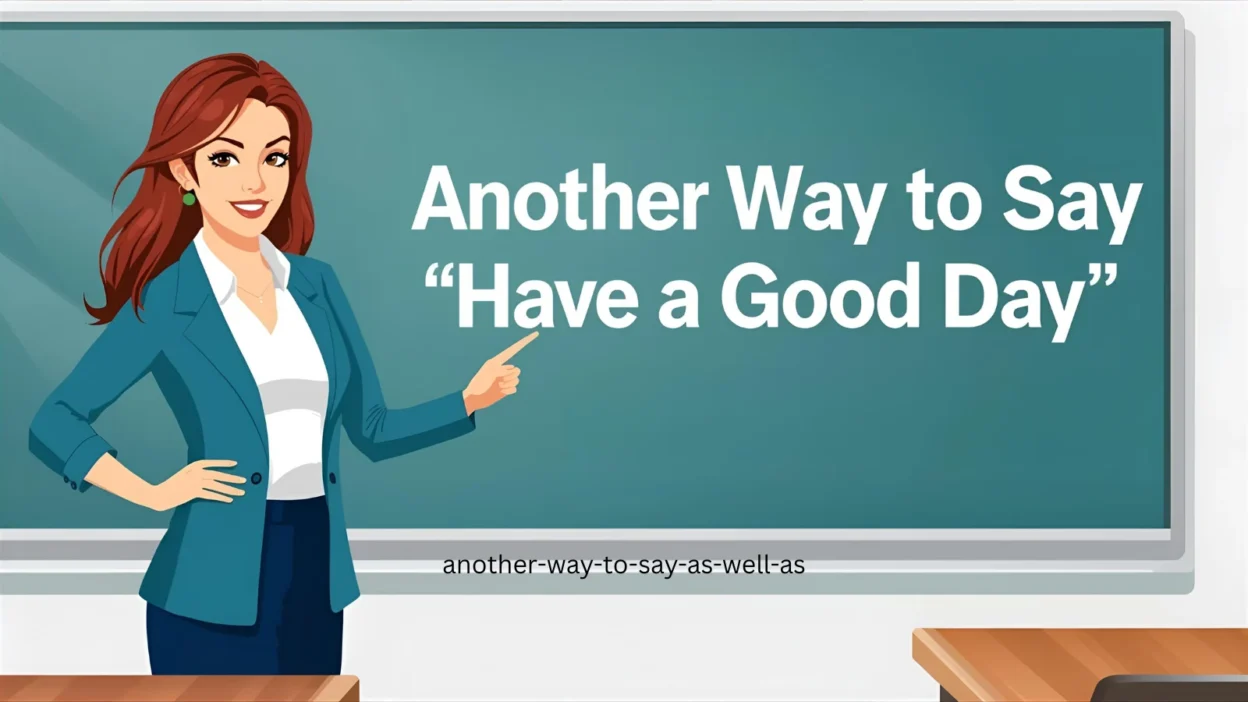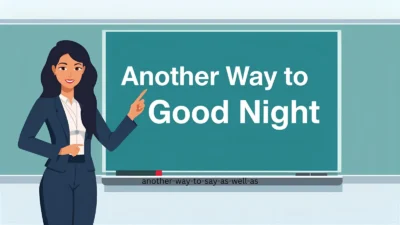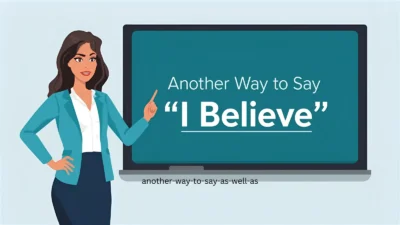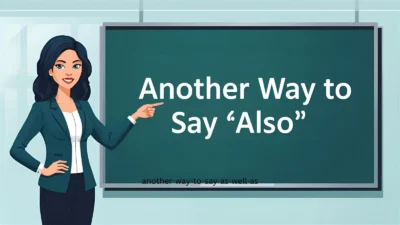The phrase “Have a good day” is one of the most common ways to end a conversation politely or warmly. It’s friendly, positive, and universal — but repeating it all the time can sound routine or impersonal. Luckily, there are many creative and thoughtful alternatives you can use depending on the situation, whether casual, professional, or affectionate.
In this article, you’ll discover 35 alternatives to “have a good day”, complete with meanings, detailed explanations, examples, best uses, and tones.
1. Have a Great Day
Meaning: A stronger version of have a good day.
Explanation: Adds more enthusiasm and positivity.
Example: “Thanks for stopping by! Have a great day.”
Best Use: Casual conversations, customer service.
Tone: Friendly, cheerful.
2. Wishing You a Wonderful Day
Meaning: Expresses heartfelt good wishes.
Explanation: Sounds warmer and more personal than the basic phrase.
Example: “Good luck with your presentation! Wishing you a wonderful day.”
Best Use: Formal or semi-formal messages.
Tone: Warm, thoughtful.
3. Have an Amazing Day
Meaning: Conveys high energy and positivity.
Explanation: A bit more expressive than “great.”
Example: “Enjoy the trip! Have an amazing day.”
Best Use: Friendly interactions, texts.
Tone: Energetic, upbeat.
4. Have a Fantastic Day
Meaning: Suggests something extraordinary.
Explanation: Slightly dramatic but uplifting.
Example: “Thanks for your help—have a fantastic day!”
Best Use: Informal or motivational contexts.
Tone: Fun, enthusiastic.
5. Hope Your Day Goes Well
Meaning: A caring expression of goodwill.
Explanation: More about wishing success in someone’s day.
Example: “Good luck with the interview—hope your day goes well.”
Best Use: Professional or personal settings.
Tone: Supportive, genuine.
6. Enjoy Your Day
Meaning: Encourages someone to make the most of their day.
Explanation: Direct and versatile.
Example: “The weather’s perfect—enjoy your day!”
Best Use: Everyday conversations.
Tone: Light, friendly.
7. Have a Lovely Day
Meaning: A sweet and gentle variation.
Explanation: Softer than “good day,” often used warmly.
Example: “Take care, have a lovely day.”
Best Use: Polite, affectionate, or semi-formal situations.
Tone: Warm, caring.
8. Have a Blessed Day
Meaning: Wishing positivity with spiritual undertones.
Explanation: Often used in faith-based or caring communities.
Example: “Thanks for visiting us—have a blessed day.”
Best Use: Religious or spiritual contexts.
Tone: Kind, uplifting.
9. All the Best for Today
Meaning: Offers general good wishes.
Explanation: Suitable for important days or tasks.
Example: “All the best for today’s exam!”
Best Use: Professional or personal encouragement.
Tone: Supportive, respectful.
10. Have a Productive Day
Meaning: Encourages success and efficiency.
Explanation: Professional twist on the phrase.
Example: “See you tomorrow—have a productive day!”
Best Use: Workplace, academic settings.
Tone: Professional, motivating.
11. Take Care
Meaning: A warm closing that shows concern.
Explanation: Broader than just wishing a good day.
Example: “I’ll call you later—take care!”
Best Use: Personal, friendly, or caring contexts.
Tone: Kind, thoughtful.
12. Make Today Count
Meaning: Encourages purpose and productivity.
Explanation: Motivational alternative.
Example: “Don’t forget your goals—make today count!”
Best Use: Inspirational messages.
Tone: Motivational, encouraging.
13. Have a Wonderful Day Ahead
Meaning: Extends good wishes into the future.
Explanation: Polite and slightly formal.
Example: “Thanks for your time—have a wonderful day ahead.”
Best Use: Emails, professional communication.
Tone: Formal, polite.
14. Have Fun Today
Meaning: Focuses on enjoyment and lightness.
Explanation: Encourages relaxation or playfulness.
Example: “You’re going to the concert? Have fun today!”
Best Use: Casual, personal conversations.
Tone: Friendly, cheerful.
15. Wishing You a Bright Day
Meaning: Suggests positivity and good vibes.
Explanation: A creative alternative to good day.
Example: “Stay positive—wishing you a bright day.”
Best Use: Friendly, uplifting messages.
Tone: Optimistic, poetic.
16. Here’s to a Great Day
Meaning: A celebratory twist on the phrase.
Explanation: Often used with enthusiasm.
Example: “Here’s to a great day of success!”
Best Use: Motivational or casual chats.
Tone: Upbeat, encouraging.
17. Have a Peaceful Day
Meaning: Wishes calmness and tranquility.
Explanation: Best when addressing stress or relaxation.
Example: “Hope you find some rest—have a peaceful day.”
Best Use: Personal, caring contexts.
Tone: Gentle, calming.
18. Hope Today Brings You Joy
Meaning: Focuses on emotional well-being.
Explanation: A bit warmer and more personal.
Example: “Take it easy—hope today brings you joy.”
Best Use: Personal conversations, supportive messages.
Tone: Kind, heartfelt.
19. Have a Successful Day
Meaning: Wishes achievement and progress.
Explanation: Aimed at productivity and goals.
Example: “Good luck with your project—have a successful day.”
Best Use: Business, work-related contexts.
Tone: Professional, supportive.
20. Have an Enjoyable Day
Meaning: Polite and pleasant version.
Explanation: Works in both formal and informal contexts.
Example: “We’ll see you tomorrow—have an enjoyable day.”
Best Use: Customer service, professional emails.
Tone: Neutral, polite.
21. May Your Day Be Filled with Happiness
Meaning: Extends warm emotional wishes.
Explanation: Slightly poetic and caring.
Example: “Sending you love—may your day be filled with happiness.”
Best Use: Personal, affectionate messages.
Tone: Warm, emotional.
22. Have a Safe Day
Meaning: Prioritizes well-being.
Explanation: Often used when safety is relevant.
Example: “Drive carefully—have a safe day.”
Best Use: Caring, protective contexts.
Tone: Concerned, kind.
23. Best Wishes for the Day
Meaning: A formal version of good-day wishes.
Explanation: Great for emails or formal letters.
Example: “Best wishes for the day, and thank you for your support.”
Best Use: Professional communication.
Tone: Polite, formal.
24. Have a Delightful Day
Meaning: A cheerful, elegant expression.
Explanation: A more refined variation.
Example: “We look forward to seeing you—have a delightful day.”
Best Use: Hospitality, customer service, personal notes.
Tone: Polished, positive.
25. Until Next Time, Have a Good Day
Meaning: Combines farewell with goodwill.
Explanation: Works when parting from someone.
Example: “It was great chatting—until next time, have a good day.”
Best Use: Casual or semi-formal closings.
Tone: Friendly, warm.
Conclusion
Instead of always saying “Have a good day,” you can choose from a wide variety of alternatives to match the context. Use formal options (Best wishes for the day, Have a wonderful day ahead), casual ones (Have fun today, Enjoy your day), or warm variations (Hope your day brings you joy, Have a peaceful day). By choosing the right phrase, you can leave a lasting impression that feels genuine and thoughtful.



